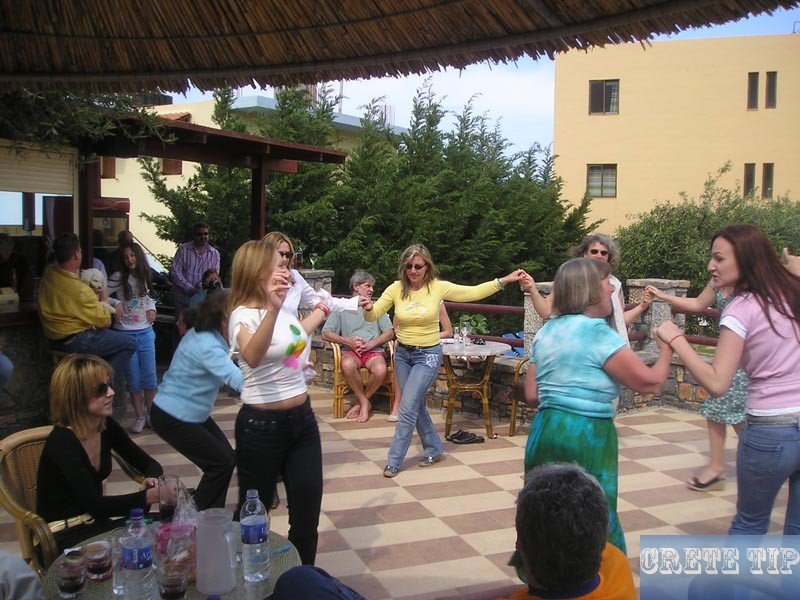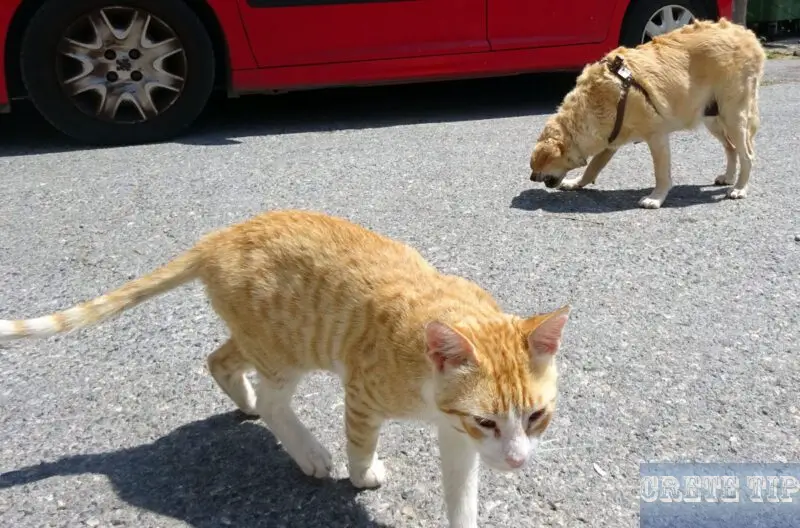The Greek orthodox Easter celebrations in Crete.
Easter is the most significant festival in Greece and has the importance of Christmas in Western Europe.
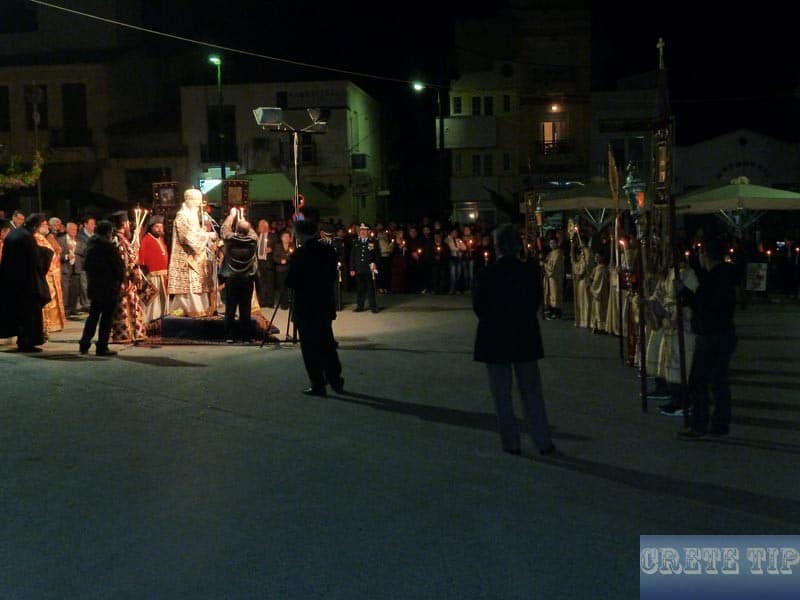
The Greek Orthodox Easter is the most important festival on Crete and throughout Greece and has the same significance as Christmas in UK.
Greek Orthodox Easter Celebrations
In 2025, Greek Orthodox Easter Sunday will be celebrated on April 20. This date aligns with Western Easter in 2025, which is a relatively uncommon occurrence.
Orthodox Easter, also known as Pascha, follows the Julian calendar rather than the Gregorian calendar used by Western Christians. However, in 2025, both Eastern and Western churches will celebrate Easter on the same day, creating a special opportunity for shared celebration.
The Orthodox Easter celebration in Greece includes several important days:
– Orthodox Good Friday on April 18, 2025
– Orthodox Easter Sunday on April 20, 2025
While Orthodox Easter Sunday is not a public holiday in Greece, most businesses follow regular Sunday opening hours.
Greek Orthodox Easter is one of the most significant religious celebrations in Greece, featuring special church services, traditional foods, and cultural customs that have been practiced for centuries.
Every Greek is trying to be at the celebrations in his hometown, and also many Greeks from abroad are travelling to Crete or other locations in Greece.
There are also many tourists who want to have an experience about the Greek Orthodox Easter celebrations on Crete, from where are the pictures further down are coming.
Although the date of Easter of the Orthodox Church is also defined as in Western Christendom first Sunday after the full moon spring, the dates almost always differ between one and four weeks, as the Eastern Church has not followed the Gregorian calendar reform.
40 days before Easter Carnival takes place, in which the Greeks traditionally fly kites in the air and take the last sumptuous meal before fasting is starting.
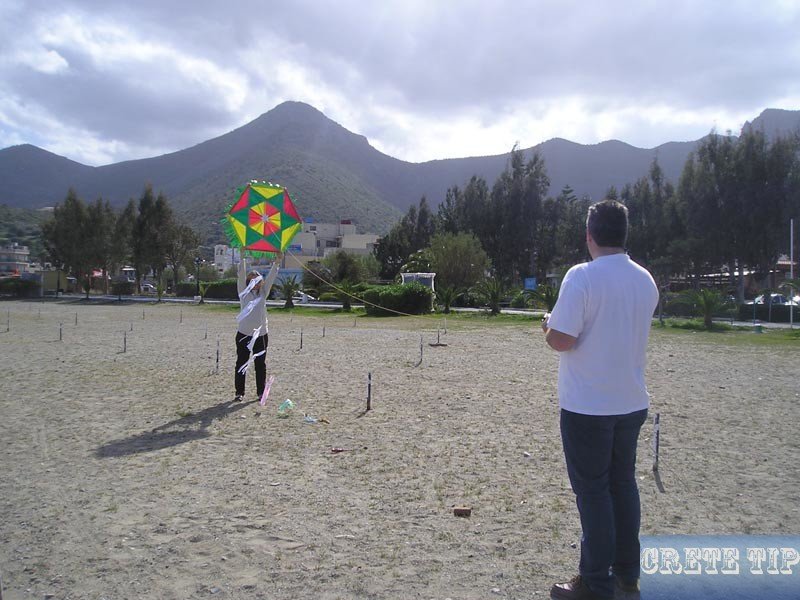
The sad climax of Easter Week is the Epitaphios Procession on Good Friday. The joyful climax is on Saturday at midnight when the priest, invoking ‘Christos Anesti’ (‘Christ is risen’), reaching a candle from the altar room! From the candle, the bystanders light their own candles and light the candles of all others.
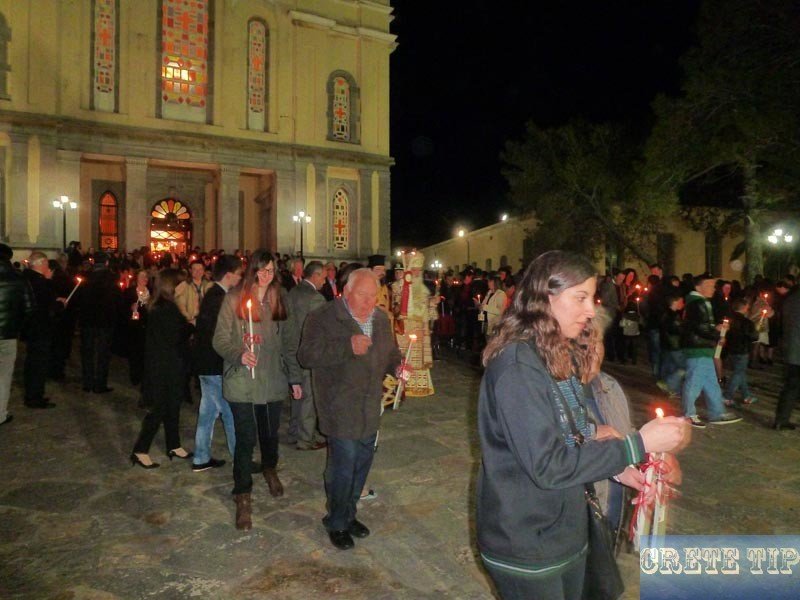
On Crete there is a pile of wood in front of the church, which is lit, and the symbolic Judas is burned. With the candle in his hand all are going home. Long after midnight, the lamb offal soup Magiritsa is consumed. On Easter Sunday, everywhere, lamb skewers are rotating over a charcoal fire.
Greek Orthodox Easter Dates:
- April 20, 2025
- April 12, 2026
- May 2, 2027
- April 16, 2028
- April 8, 2029
Greek Orthodox Easter schedule and food dishes
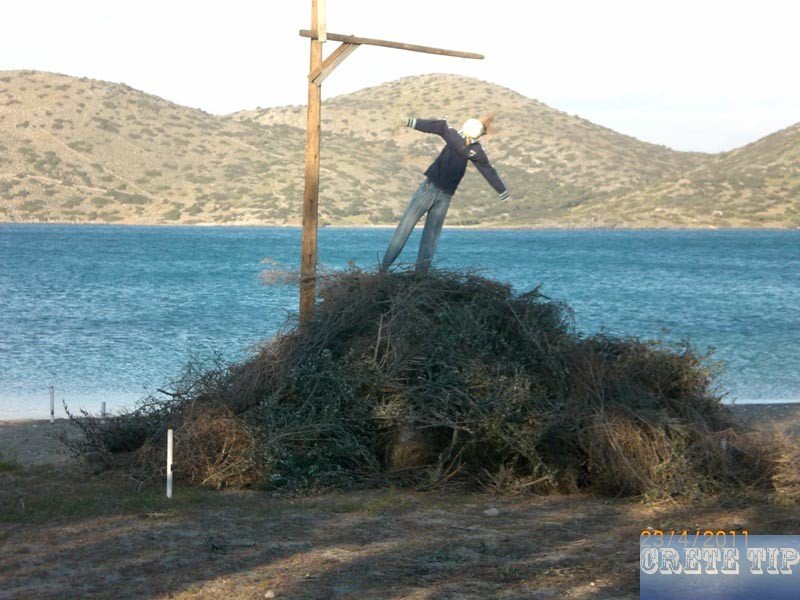
If you plan to visit Crete during the Orthodox Easter festival, be prepared for a week of extravagance. The whole of Greece celebrates this special festival in a way that is unlike anywhere else in the world. There are a number of unique Easter traditions that you will experience during your stay in the country.
Many Greeks are very religious and for the nation as a whole, Greek Orthodox Easter is a continuous week-long festivity that includes a number of celebrations.
Holy Week, called Megali Evdomada, is packed with symbolic events, celebrations and traditions, accompanied by all Greeks, although the peak of the festivities does not begin until around Maundy Thursday.
In the Greek Orthodox faith, Easter is the holiest of all feasts. The preparations and customs, including traditional Cretan dishes and grand celebrations, remain an important part of modern Greek life as well.
Towards the end of Holy Week, which falls between Palm Sunday and Easter, preparations for Easter reach their peak. Although each region in Greece also has its own local customs related to Easter, there are several traditions that are observed by all.
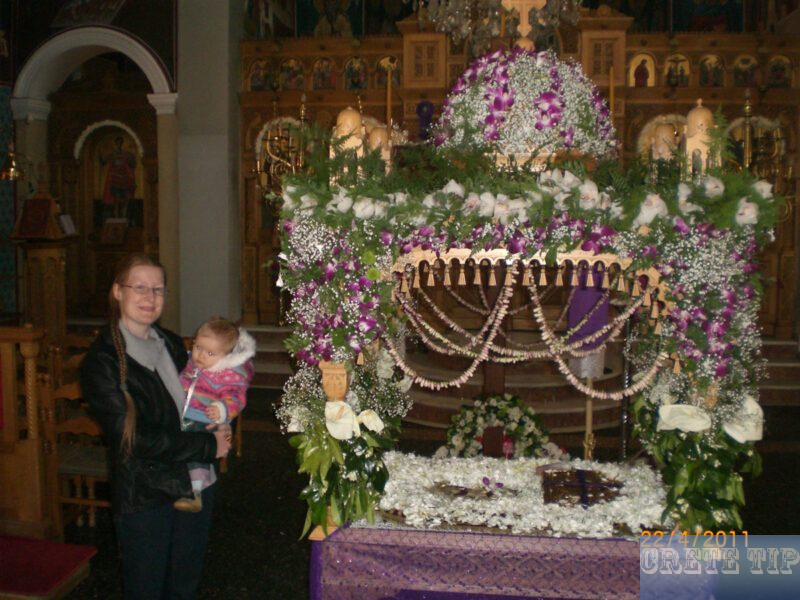
Maundy Thursday
Easter preparations begin on Holy (or Great) Thursday. At this time, the traditional Easter bread tsoureki is baked, and the eggs are dyed red to represent the blood of Christ. Since ancient times, red eggs have been a symbol of the renewal of life and carry the message of victory over death.
In earlier times, superstition grew into this custom. It includes placing the first red egg at the iconostasis of the house – the place where the symbols are displayed – to ward off evil. It also involves painting the heads and backs of the little lambs with red paint to protect them.
On Maundy Thursday evening, a symbolic representation of the crucifixion takes place in the church services and the mourning period begins. In many villages and towns, women sit in traditional mourning in church all night.
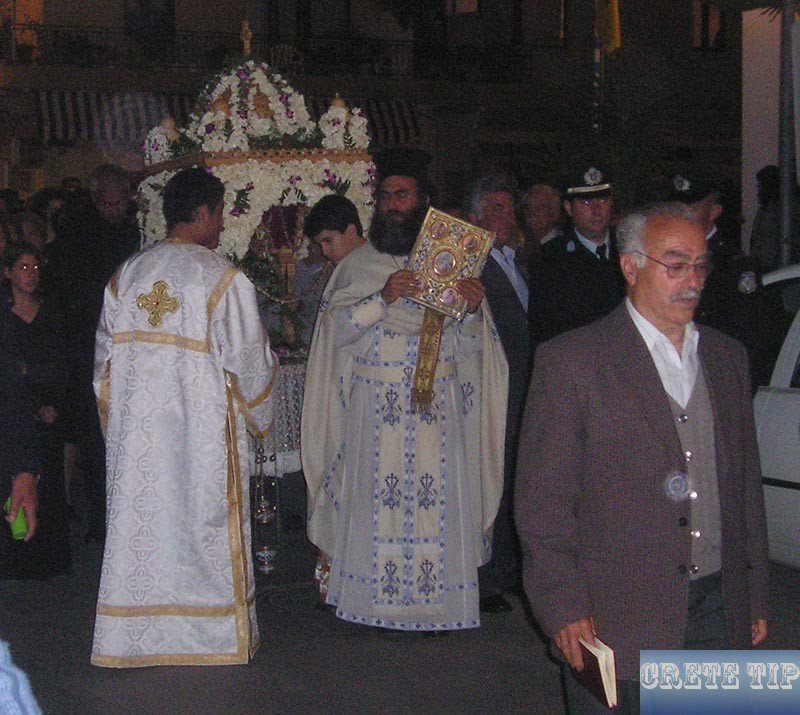
Good Friday
The holiest day of the week is Holy (or Great) Friday. It is a day of mourning and not a day of work, including cooking. It is also the only day of the year when the Divine Liturgy is not read. Flags are hung at half-mast and church bells ring in a slow, mournful tone all day.
Many devout people do not cook on Good Friday. If so, the traditional foods are simple and only those that can be cooked in water without oil and seasoned with vinegar. Beans or thin soups like tahinosoupa (a soup made from tahini) are common.
Traditionally, women and children bring flowers to church to decorate the epitaphio – the symbolic bier of Christ. It is the day for the lament service for the death of Jesus Christ.
The bier is richly decorated with flowers and bears the image of Christ. During the service, it is carried on the shoulders of the faithful in a procession that passes through the parishes to the cemetery and back. Members of the congregation follow with candles.
Holy Saturday
On Holy (or Great) Saturday, the ‘Eternal Flame’ is brought to Greece by plane and distributed to waiting priests, who carry it to their local churches. The event is always televised, and if there is bad weather or a delay, the whole country waits in fascination until the flame arrives safely.
On the morning of Holy Saturday, preparations begin for the next day’s Easter feast. Dishes are prepared that can be made in advance. The traditional Mageritsa soup, which is enriched with the organs and intestines of the lamb to be roasted, is prepared. It is eaten after the midnight service.
The midnight service of resurrection is an occasion attended by all who are able, including children. Each person holds a white candle, which is provided only for this event.
Video of the Greek Orthodox Easter Mass Night at Plaka
The special candles made for Easter are called Labatha and they are often given to children as gifts from their parents or godparents. Although the candle itself is typically white, it can be elaborately decorated with popular children’s heroes or picture book characters. They can grow up to a meter tall.
The crowds are so large that churches fill to overflowing as the mass approaches its climax. Just before midnight, all the lights are extinguished, and the churches are lit only by the ‘Eternal Flame’ on the altar.
When the clock strikes midnight, the priest calls out ‘Christos Anesti’ (‘Christ is risen’) and hands the flame – the light of the resurrection – to those standing closest. The flame is then passed from one to the next, and it is not long before the church and courtyard are aglow with flickering candlelight.
The night air is filled with the singing of the Byzantine chant ‘Christos Anesti’ and the ‘Fili tis Agapis’ (‘Kiss of Agape’). Friends and neighbors exchange ‘Christos Anesti’ to wish each other well. In response, one receives ‘Alithos Anesti’ ‘Really, he is risen’) or ‘Alithinos o Kyrios’ (‘True is the Lord’).
As soon as ‘Christos Anesti’ is shouted, it is also customary for the church bells to ring joyfully and continuously. Ships in ports all over Greece participate by sounding their horns, casting floodlights on large buildings and setting off fireworks.
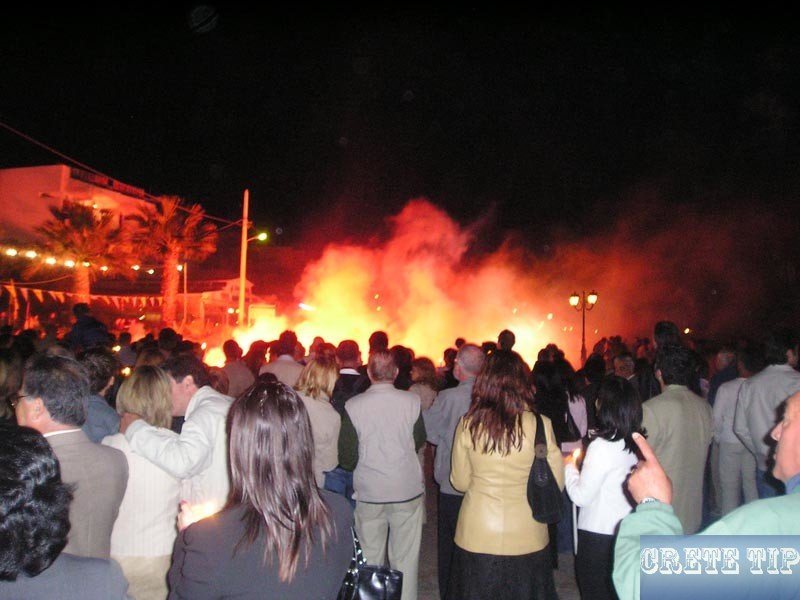
The traditional meal
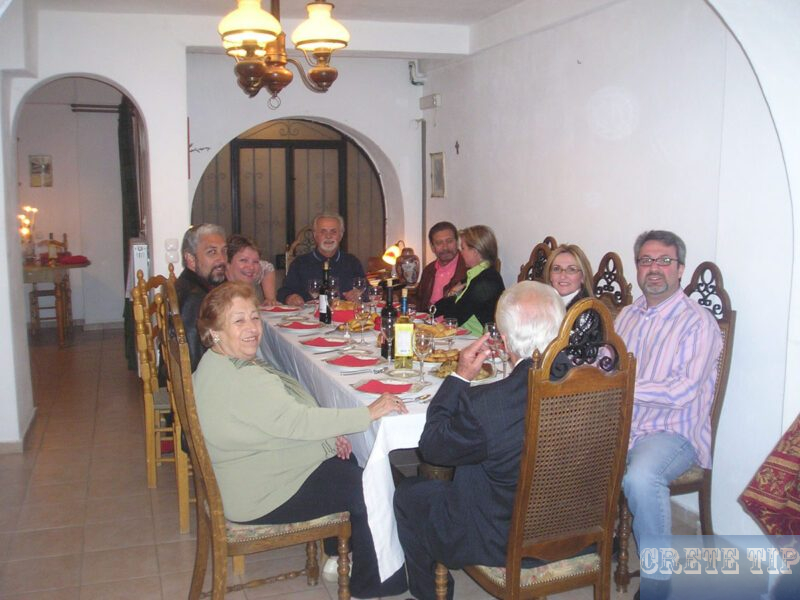
It is customary to carry the ‘Eternal Flame’ home, leaving the sign of the cross in smoke on the door frame. The smoke cross remains there throughout the year, symbolising that the light of the resurrection has blessed the house.
The candles are used to light icon candlesticks and are placed on the table for the midnight meal. The sight of hundreds of small candle flames moving from the churches to the many homes on this night is indeed impressive.
At home, everyone gathers around the table for a traditional meal to break the fast. This includes mageritsa soup, tsoureki (sweet bread) and the red eggs prepared beforehand.
Before the eggs are eaten, there is a little traditional competition called tsougrisma. Holding your egg, you tap the end against the other person’s egg and try to break it without breaking the shell of your own egg. This game is played by both children and adults. The eggs are often produced in very large quantities, as the game is continued the next day with even more friends and family members.
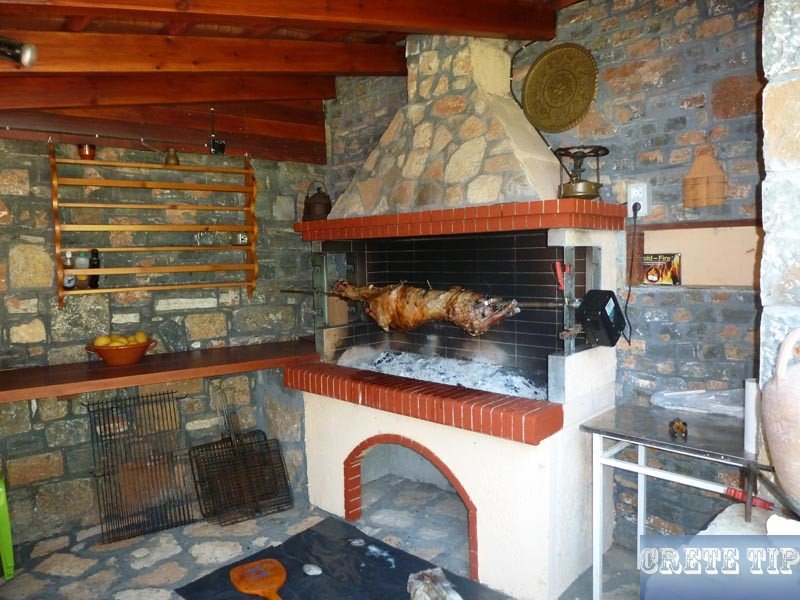
Easter Sunday
The main attraction of Easter Sunday is the traditional Greek Easter dishes. At dawn or often before, the skewers are prepared and the grill is lit. The usual main dish of the day is the whole roasted lamb or a small goat to represent the Lamb of God. However, many today prefer the simpler oven or stovetop method for lamb or goat dishes.
Starters such as Greek olives and tzatziki (a cucumber yoghurt) are served for guests to enjoy while they watch the lamb cook on the spit. The ovens are filled with traditional side dishes and all the trimmings, such as patates fournou – potatoes roasted with citrus and oregano – and spanakotyropita – spinach and cheesecake.
Large quantities of Greek wines, ouzo and other drinks are drunk. The preparation of the meal becomes a festive act before the meal even begins. The meal is a lengthy affair, often lasting long into the night and sometimes up to four hours.
Easter Monday
Another Greek bank holidays is also Easter Monday. It is the day to take things slowly Siga-Siga. Things are more casual and the delicious leftovers from the previous day are eaten.
Pictures from Greek Orthodox Easter Festival

